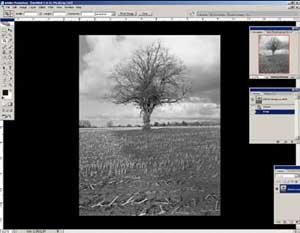articles/Monochrome/prescysolef-page1
Prescysol EF - Precision in processing - part 1 of 1 2 3
by Paul Gallagher Published

When it comes to creative photography, colour workers have committed a lot of their efforts to capturing their chosen image using filters and accurate exposure. The next stage is to hand over the films to a trusted laboratory for either E6 or C41 processing, depending on whether you are using transparency film or negative film. If, however, you are a monochrome worker, you are at will to do the same or you can choose to venture into the complex world of monochrome processing.
When I say complex I can almost hear people saying, "It's only dev, stop and fix!" - but is it?

It is at this stage that you can make very important decisions as to whether you want grain or want to hide grain. Do you want to pull or push the manufacturer's recommended film speed or increase or lower contrast? You have the choice of different dilutions, temperatures and amounts of agitation. In short, the control is infinite and in the wrong hands the results can be at best passable and at worst a complete loss of the image.
I have personally made some classic cock-ups, which have resulted in golf-ball grain, pancake-flat contrast and complete loss of both highlight and shadow detail, not to mention spectacular streaks in sheet film. I am glad to say that this was many years ago now and since then I have finely tuned my methods to a point where I know what I am going to get with a few, specifically chosen developers, that fit comfortably with me and my requirements for fine art landscape work.
You are currently on page 1
- Prescysol EF - Precision in processing page 1
- Prescysol EF - Precision in processing page 2
- Prescysol EF - Precision in processing page 3
1st Published
last update 09/12/2022 14:58:10
More Monochrome Articles
There are 5 days to get ready for The Society of Photographers Convention and Trade Show at The Novotel London West, Hammersmith ...
which starts on Wednesday 14th January 2026




